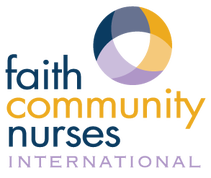Health Literacy Basics for the Faith Community Nurse
Speaker: Karen Hernes, MSN, RN, CNE
Low health literacy continues to be a problem, as “only 12 percent of U.S. adults have the health literacy skills needed to manage the demands of our complex health care system, and even these individuals' ability to absorb and use health information can be compromised by stress or illness” (AHRQ, 2018). Research has shown that individuals with low health literacy often have poorer health outcomes, compared with those who have high health literacy levels. Health information is often written and communicated at level difficult to understand. Although health professional education programs are increasingly adding health literacy into their curricula, many health care professionals lack the knowledge and skills to recognize and address low health literacy in their practices (Brega et al., 2015).
Recognized as an international concern, The World Health Organization (2016) recognizes health literacy as a crucial link to obtaining many of the Sustainable Development Goals. The desired state would include health care professionals providing understandable health information, health care systems being easy to navigate, and patients being equipped to understand and process this information in order to make informed decisions about their healthcare. “Nationally, there is a call for RNs to be competent in providing clear and understandable health information to patients, necessary to follow health care advice adequately and safely” (Toronto, 2016, p. 564). Nurses in community health settings can help create a shift in focus to create a cultural change in the health literacy arena (Loan et al., 2018). Specifically, faith community nurses are uniquely positioned as advocates and educators who can help optimize health and well-being among those vulnerable populations affected by low health literacy.
The Agency for Healthcare Research and Quality identifies 3 parts to this gap: information is not always communicated clearly, the health care system is often difficult to navigate, and patients are not always empowered to address their own healthcare needs (Brega et al., 2015). “Health literacy is not well understood by clinicians, rarely approached as a health care system issue, and is not universally executed across health care domains” (Loan et al., 2018, p.97). This CE will focus on the faith community nurse’s role in addressing health literacy in his or her community by focusing on improving these 3 areas. By increasing the health literacy knowledge of faith community nurses, the nurses will be empowered to make changes in practice to improve health outcomes in those vulnerable populations with low health literacy.
At the conclusion of this activity, the learner will be able to:
- summarize the basic concept of health literacy.
- describe health literacy universal precautions.
- identify one health literacy concern in his or her practice.
- identify one intervention to address low health literacy in his or her practice.
1 Contact hour will be awarded to participants attending the entire event and after completion of event evaluation.
Event time(s):
4:00 pm - 5:00 pm PST
5:00 pm - 6:00 pm MST
6:00 pm - 7:00 pm CST
7:00 pm - 8:00 pm EST
The meeting will be conducted via Zoom. Registrants will receive access information upon registration.
